Milkweed and Monarchs
Every summer, Teatown campers visit the fields at Cliffdale and Hidden Valley, nets in hand, on the prowl for insects. Snapping the net with just the right motion, a camper can be rewarded with a grasshopper, bee, or butterfly.
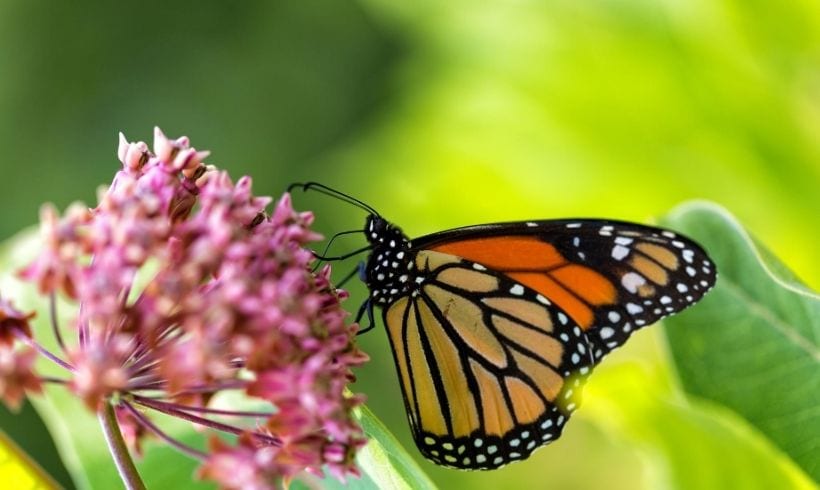
Some campers readily investigate every plant in search of beetles, aphids, and caterpillars. Invariably they collect a few monarch caterpillars and leaves of milkweed, the caterpillar’s host plant, to watch the transformation from voracious eating machine to chrysalis and finally the emergence of an adult monarch in all its glory.
Milkweeds are vital to a monarch’s life cycle. As adult monarchs migrate north from Mexico in the spring, they feed on a variety of nectar-rich flowers, including milkweed. Several generations later, they appear in Teatown’s fields to lay their eggs on the underside of milkweed leaves. The caterpillars remain there, busily munching away until they crawl off to undergo pupation inside a gold-speckled chrysalis. Hence, no milkweed, no monarchs! Life is rough for an organism whose life cycle is so tied to one plant for its survival. As the sole host plant for monarch caterpillars, the relationship between milkweed and monarchs is crucial.
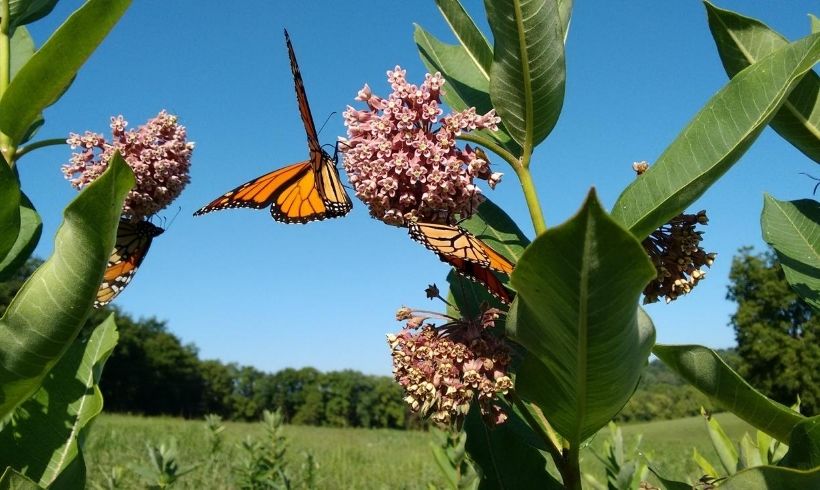
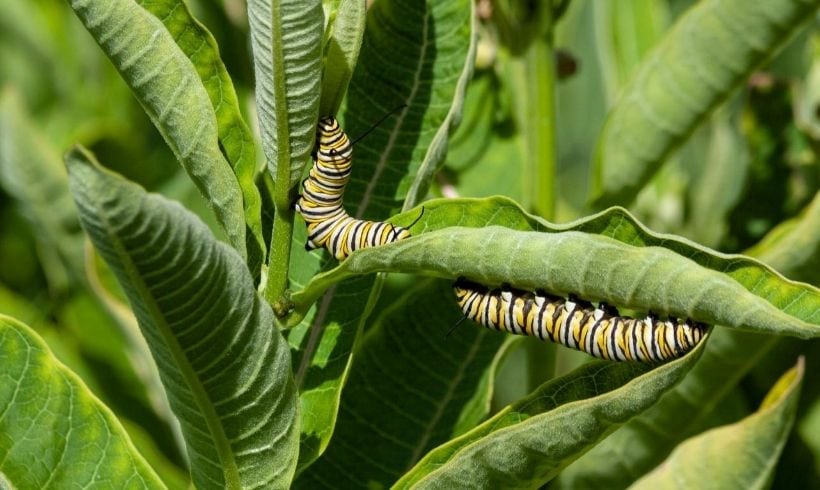
But milkweed is beneficial to many other organisms as well. The fragrant purplish flowers of common milkweed (Asclepias syriaca) attract other butterflies like fritillaries, swallowtails, and cabbage whites, bumblebees and honeybees, and many species of moths, which visit the plants at night when the most nectar is secreted. Some insects feed on the sap from the stems, like yellow and black oleander aphids (Aphis nerii) and red milkweed bugs (Lygaeus kalmia). Milkweed tussock moths (Euchaetes egle) and milkweed leaf beetles (Labidomera clivicollis) munch on the downy pale green leaves. Bearing bright colors and patterns, these insects, like the monarch, are toxic to predators. Their bright coloration serves as a deterrent — providing warning to predators that the next mouthful may be their last! This toxicity comes from the milkweed plant’s chemical make-up. All parts of milkweed contain a milky and sticky sap containing glycosides, potent defensive chemicals, which ooze from broken stems, flowers, and leaves. The sap is both lure and trap.
Crab spiders, mantids, and assassin bugs all take advantage of the milkweed hunting grounds and find plenty of leaf eaters and nectar feeders to prey upon.
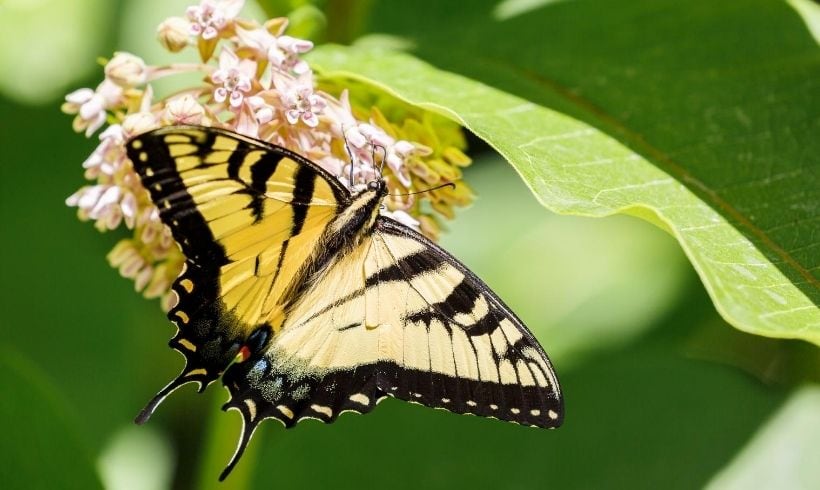
Swallowtail Butterfly on Milkweed
This year I miss seeing the looks of wonderment and the excited cries of campers as they witness the transformation of monarch caterpillar to adult. Luckily, even amidst a pandemic that has shut down most of what summer is at Teatown, the milkweed blossomed, seedpods are forming, and monarch caterpillars, although not numerous, have been feasting on the leaves. Soon it will be time for these monarchs, the great -great-grandchildren of those that left Mexico last spring, to begin the return journey south to their overwintering grounds. Gotta go!
Before they take flight, there’s still time to be an active Citizen Scientist and gather information to share with others. Through September, Teatown educators will be on the lookout for monarchs in fields around the preserve, capturing and tagging adults as part of Project Monarch Watch, and you can participate, too. Visit www.monarchwatch.org to find you how you can help monitor monarchs in our area.
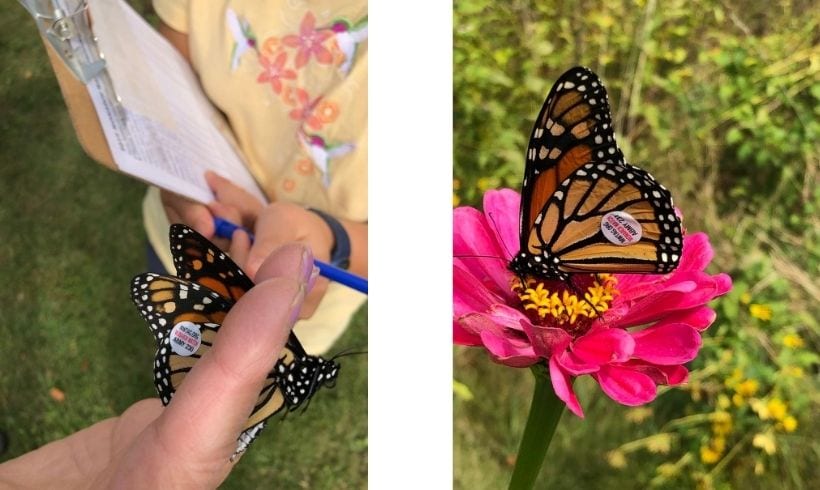
You can also check out www.journeynorth.org, another Citizen Science endeavor that has thousands of volunteers across the country tracking monarch migration in real time as they travel north in the spring and south in the fall.
If you have a patch of ground that gets a good amount of sun, plant milkweed! Just make sure it’s a native milkweed such as bright orange butterfly weed (Asclepias tuberosa), swamp milkweed (Asclepias incarnata), and common milkweed (Asclepias syriaca). Keep in mind that common milkweed can become aggressive — which is fine in the right place! All of them provide nectar and host monarchs. I’ve had success with planting common milkweed in large pots, to keep it from spreading into perennial borders. If you are turning lawn to meadow, milkweed presents an ecosystem in miniature! Become part of the Pollinator Pathway — www.pollinator-pathway.org — and turn your yard into a haven for monarchs and more.

About the Author
Phyllis Bock, Director of Education
Phyllis has worked at Teatown since October 1991, when she began as a volunteer Nature Guide. Ms. Bock possesses a BA Biology from Queens College, CUNY. As Education Director, she takes to heart Teatown’s mission and encourages young and old alike to embrace all that nature has to offer. She can often be found hiking or kayaking somewhere in the Hudson Valley.
Upcoming program
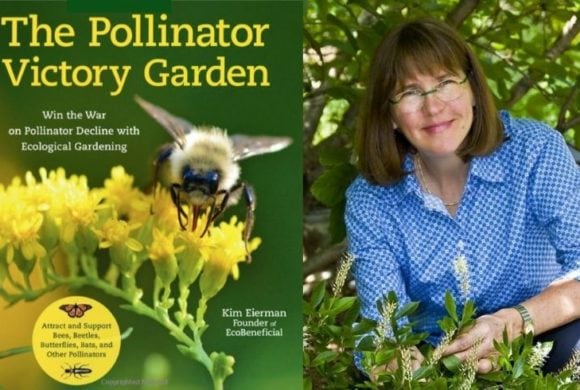
Webinar: Pollinator Victory Gardens with Kim Eierman
September 24 @ 7:00pm – 8:30pm
Kim Eierman, founder of EcoBeneficial, local author, ecological designer, and longtime friend of Teatown, presents a native plant webinar featuring her latest book The Pollinator Victory Garden. With pollinators in steep decline she offers insight on how best to combat this trend with ecological gardening. Unfortunately, most of our landscapes offer little in the way of appropriate habitat and forage. With simple strategies, you can become a garden warrior and attract and support not just bees, but an array of pollinators.

